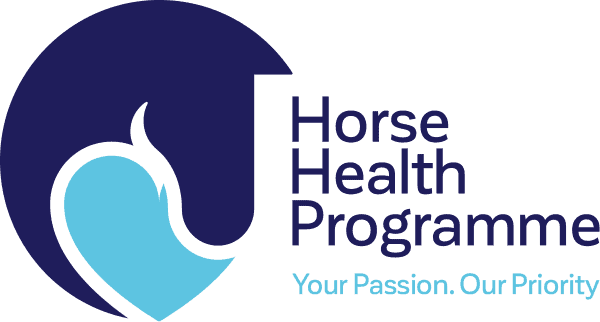Lameness investigation
The diagnosis and treatment of the lame horse can be frustrating and confusing. The aim of this article is to try and explain the processes that veterinary surgeons go through when dealing with a lame horse. It goes without saying that every lame horse is unique. Therefore a flexible approach to dealing with cases is required.
However, it all starts with taking a good history – this is the starting point of any investigation! Answers to the following questions (and more) are invaluable, as they help to build up a picture of the lameness. For example, an unshod broodmare found hopping lame in the field is more likely to have developed a foot abscess than injuring a tendon. But in less obvious cases, taking a careful history can be much more important.
- How long has the horse been lame for?
- What level of exercise is the horse currently engaged in?
- Has any treatment already been tried (e.g. rest and bute)?
- Any previous incidence of lameness in the horse?
- Age, breed and sex of horse?
The initial examination of lameness
This may include one or more of the following:
- Examination at rest
- Assessment of conformation
- Palpation of limbs, pelvis, neck and back
- Examination in hand (walk and trot)
- Flexion tests
- Lunging
- Examination under saddle
- Examination on different surfaces (soft and hard).
The aim of the initial examination is to:
- establish which leg or legs the horse is showing signs of lameness on
- establish whether there are any obvious clues as to the site of pain (heat, swelling, pain on
palpation)
This can be very straightforward or very difficult depending on the case. If it is reasonably obvious which leg the horse is lame on, but the exact site of injury cannot be located, further investigation is likely to be required.
Decision making
After taking a good history and performing the initial examination, a decision needs to be made after a discussion between the vet and the owner/trainer. Is the horse rested? Sent home with Bute? Is specific treatment required, e.g. medication of joint? Do nerve blocks need to be performed? Is further imaging such as X-rays, a Bone scan or MRI needed?
It is clear that multiple options are available. There is no single right answer, so the information below is intended as a general guide to the decision-making process:
1) If there is an obvious lameness and obvious nature of injury (e.g. foot abscess/laminitis)
Initiate appropriate treatment.
2) If there is an obvious lameness and obvious site of pain, however, the extent of the injury is unknown (e.g. swollen/painful tendon)
Specific imaging technique(s) will need to be performed to evaluate extent of damage, such as an ultrasound scan, x- ray, MRI etc.
3) If there is an obvious lameness but no obvious site of pain
- a) further diagnostic work up needed e.g. nerve blocks (see below) or
- b) initiate period of rest +/- painkillers or
- c) institute treatment based on probable diagnosis
It goes without saying that option a) further diagnostic work up is by far the most preferable, in these less obvious cases. However, if financial constraints preclude this, then option b) or c) can be tried,. This is with the caveat that we may have to return to option a) if the horse does not come sound.
In general, rest and painkillers are more likely to be successful in horses with a lameness of only a recent duration. It may be that rest is the treatment despite the diagnosis. However. of course it is impossible to know how much rest is needed until a diagnosis has been reached.
4) No obvious lameness.
This would apply to some low grade, chronic cases. The complaint would often be that the horse is ‘not feeling right’ rather than overtly lame on one leg. This would be especially true of horses that are lame on both hind (or front) legs. These are the most frustrating cases as interpretation of nerve blocks is difficult if there is not an obviously lame horse to start with. In this cases, some of the options available include:
- a) attempt nerve blocks, bearing in mind that interpretation may be unrewarding. Interpretation of such blocks often relies on how the rider feels the horse goes after being nerve blocked, which can be highly subjective
- b) continue working the horse, under the influence of painkillers (‘bute trial’). This can be useful in distinguishing genuine lameness from a schooling issue
or - c) send the horse for nuclear scintigraphy (‘bone scanning’) – this technique allows whole body assessment of potential sites of pain
Where to go after nerve blocks?
If nerve blocking successfully highlights the area of pain, it is likely at this stage that some form of diagnostic imaging is then required.
For example, if a horse goes sound after desensitising the fetlock, then x-rays of the fetlocks would be the next logical step. It is always advisable to take x-rays of the same area of the opposite leg. This can be vital in establishing the significance of any abnormalities seen.
Care should always be taken when interpreting x-rays or scans without the benefit of nerve blocks to establish the site of the pain. For example, x-ray changes in hocks with bone spavin often show a poor correlation with the level of pain. Simply x-raying such hocks without nerve blocking first can lead to an incorrect diagnosis.
It should be pointed out that nerve blocking is not an exact science. A 100% improvement is unlikely after a positive nerve block. A 60-70% improvement of a chronically lame horse may still be significant. If there are multiple causes of the lameness, interpretation becomes even more of a challenge.
What are Nerve Blocks?
Nerve blocking’ or ‘blocking’ involves the injection of local anaesthetic solution into specific areas in order to desensitise the area in question. The local anaesthetic can be injected into the nerves supplying a certain region, or into an enclosed space such as a joint or tendon sheath. The local anaesthetic quickly provides a short-term loss of pain sensation (for usually around 2 hours). For the horse in which the site of the lameness cannot be detected externally, this is an invaluable tool in locating where the pain originates from.
What is Nuclear Scintigraphy (Bone scanning)?
‘Bone scanning’, as it is more commonly known, is another technique that can be used in an attempt to highlight the area from where the pain originates in a lame horse. It is particularly useful in pelvic injuries, where the bones cannot be easily x-rayed and also for the occasional horse that is too dangerous to nerve block. The technique involves the intravenous injection of a radioactive substance. This substance will then ‘stick’ to areas of damage in the body, and the areas of increased uptake (‘hotspots’) are detected with the use of a special camera. This obviously highlights potential sites of lameness. The process is completely safe to the horse. The technique is predominantly used for skeletal or bony injuries, although can be used to highlight certain soft tissue injuries.
What is MRI – Magnetic Resonance Imaging?
MRI has become readily available at referral centres over the past few years. The use of MRI has dramatically increased our ability to diagnose injuries that previously went undiagnosed, or wrongly diagnosed. MRI works by applying a strong magnetic field across parts of the body. Then applying a pulse of radiowaves at the area in question. The signal that echoes back from the radiowaves is then used to create the image. MRI detects both soft tissue (e.g. tendon, ligament) and bony problems, and provides an extremely high level of detail. It is of particular use when dealing with foot problems, as it allows us to see the soft tissue structures inside the foot.
Before MRI was available, visualising soft tissue inside the foot was very difficult, mainly due to the hoof wall preventing the use of accurate ultrasound examination. If a lameness has been isolated to the foot using nerve blocks, and x-rays fail to highlight an obvious problem, MRI will often be the next diagnostic step.
Treatment options for lameness
The range of treatment options for lame horses has increased dramatically in the past few years, and is beyond the scope of this article. Once a diagnosis has been reached, there are numerous options for treatment, these range from simple painkillers and rest, to the implantation of stem cells. Your vet would advise you on the best treatment options for you and your horse.





